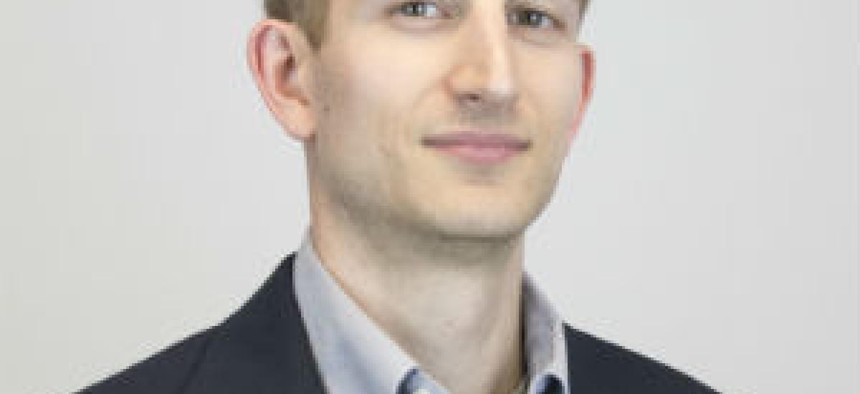New Lockheed CEO marks shift for world's largest defense firm

Lockheed Martin has turned to its board of directors for its new leader, and not the typical insider, as CEO Marillyn Hewson announces that she'll step down in June.
Lockheed Martin’s announcement Monday that CEO Marillyn Hewson will step down from that position and be succeeded by board member James Taiclet represents a change from recent precedent at the world’s largest defense company.
Hewson elevated to the role in 2013 after a 30-year career there and her predecessor Bob Stevens became CEO in 2004 after prior stints as chief financial officer and then president. Stevens joined Lockheed in 1996 after its acquisition of the former Loral defense business, where he was a senior executive.
Vance Coffman, Stevens’ predecessor as CEO from 1998-2004, joined the heritage Lockheed Corp. in 1967. Coffman replaced Norm Augustine, who helped orchestrate the merger of Lockheed and Martin Marrietta. He was the CEO of Martin Marrietta.
That means Hewson, who is staying as executive chairman, and every other CEO of Lockheed Martin have all been promoted to the top role from within the company.
But veteran market and human capital watchers I spoke with are staying away from the word “outsider” to describe Taiclet, CEO of real estate investment trust American Tower Corp. since 2003 and Lockheed board member since 2018. Taiclet will become Lockheed’s CEO on June 15.
“This is somebody who has been sitting in the boardroom of Lockheed Martin for two years, so he’s certainly not an outsider,” said Sam Dinte, director at Dinte Executive Search, which specializes in aerospace and defense. “It’s not like he hasn’t been read in to what they’ve been focused on, so I think it’s a relatively responsible way of injecting a fresh perspective.”
Dinte also pointed out that Taiclet is CEO of a publicly-traded company in American Tower, which means he has experience in communications with investors -- certainly an important stakeholder for Lockheed under Hewson’s tenure, during which its stock price has climbed nearly three-fold.
“They (CEOs) know the right questions to ask at a board meeting about allocating resources, personnel issues, virtually anything that might impact an enterprise,” said Clarke Havener, vice chairman at executive search firm Odgers Berndston and head of its U.S. board practice.
Consider also that Taiclet is no stranger to the A&D sector. He is a former president of Honeywell’s aerospace services segment and prior to that a vice president at Pratt & Whitney, the airplane engine making business of United Technologies Corp.
Jon Barney, head of Odgers Berndston’s aerospace and defense practice, touted that background as another reason why Taiclet should not be thought of as an outsider.
“He’s going to have the experience to know how the A&D sector operates,” Barney said. “He’s also going to bring that commercial acumen, and, in terms of speed, the dynamic environment you might get in a consumer-driven environment as well.”
Lockheed’s appointment of Taiclet was not the only executive move it announced. Frank St. John, three-decade company veteran and executive vice president of the rotary and mission systems segment, will become chief operating officer with responsibility for performance of all Lockheed’s units. All of Lockheed’s four segment heads will report to St. John.
“They’re not doing this without considering the day-to-day operations of the business units, so the appointment of a COO that is an insider to ensure that the businesses retain their autonomy,” Dinte said. “It’s an important move and you have to think about the harmony between the past and the future when you’re trying to execute culture shifts like this.”
That shift comes amid changes across the customer environment and particularly acquisition models. While traditional methods are not going away, contractors are assuming more risk by increasing research-and-development methods in a world of rapid prototyping and engaging with agencies in different ways.
Hewson’s tenure began abruptly in 2013 when Lockheed fired Chris Kubasik, then slated to be CEO, over an ethics violation. She then guided Lockheed through a period of transition that included two transformative and subsequent transactions: the $9 billion acquisition of Sikorsky in 2015 and the spinoff of the IS&GS services business to Leidos the following year.
Lockheed also significantly grew its international sales and prioritized investments in new digital technologies in areas such as autonomy and artificial intelligence. In addition, Hewson met regularly with U.S. presidents and international heads of state.
“Love of company and love of country have always been intertwined during my career. So, it’s important as I leave the CEO role that this national asset is in top shape -- financially strong, with a record $144 billion in orders, and a vibrant workforce,” Hewson wrote in a LinkedIn post.
“I am also leaving the ‘corner office’ in good hands” as Taiclet was appointed “on my recommendation,” Hewson added.
Lockheed also announced that Stephanie Hill, head of its enterprise business transformation division, will succeed St. John as rotary and mission systems leader on June 15. Hill oversees Lockheed’s digital transformation and enterprise IT teams in her current role, which followed stints as deputy executive VP of the RMS unit and senior VP for corporate strategy and business development.
NEXT STORY: Unisys Federal lead PV Puvvada not joining SAIC
